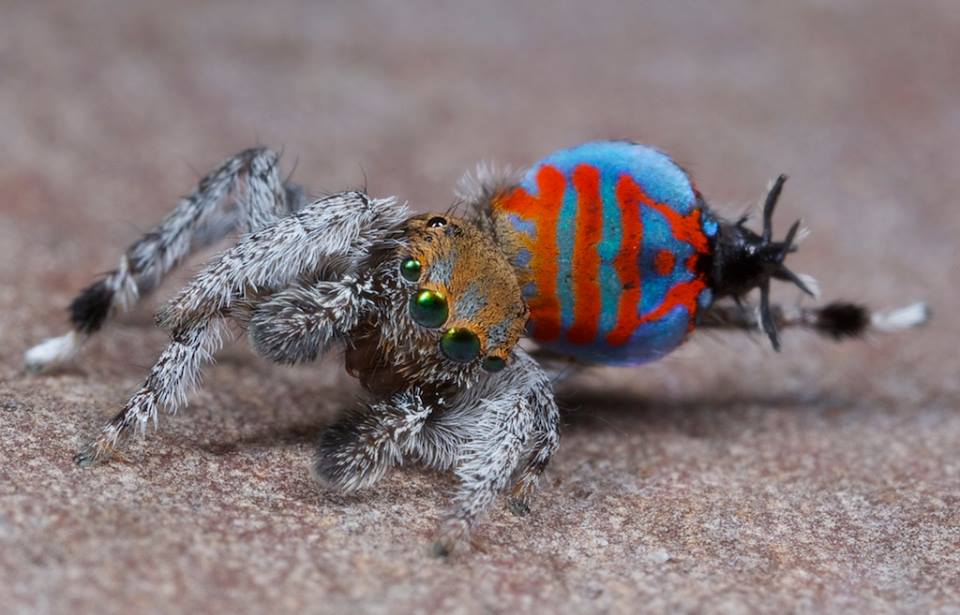Meet 2 New Spider Species: 'Skeletorus' and 'Sparklemuffin'

Two gorgeous new species of peacock spiders nicknamed "Skeletorus" and"Sparklemuffin" have been discovered in Australia, according to a new report.
Peacock spiders are so-named because of their bright colors and their dancelike, courtship rituals.
The two new species were found in southeast Queensland by Madeline Girard, a graduate student at the University of California, Berkeley who studies peacock spiders, and a friend who went with her into the field. Girard affectionately gave the nickname Sparklemuffin to one of the species, Maratus jactatus, which has bluish and reddish stripes on its abdomen.

She nicknamed the other species Skeletorus for its white markings on a black background, which make it look a bit like a skeleton. Sparklemuffin looks similar to three previously discovered species in this group of peacock spiders, whereas Skeletorus looks very different from all the other known species in the group.
In fact, Skeletorus, officially named Maratus sceletus, "looks dramatically different [from] all other peacock spiders known to date, making me think that this group is perhaps much more diverse than we had thought," said Jürgen Otto, an entomologist who specializes in photographing the arachnids and who co-authored the report. [Incredible Photos of Peacock Spiders]
"Despite the large number of species we have discovered just in the last few years, I can't help feeling that we may have just scratched the surface of this most exciting group of spiders, and that nature has quite a few more surprises in store," Otto told Live Science.
The first peacock spider was discovered in the 1800s, said study co-author David Hill, the editor of the journal Peckhamia, which published the new report on Jan. 20. But then, "for more than 100 years, almost nobody looked at these animals," until Otto started photographing them and recording their courtship displays, Hill said. The spiders are very small, measuring between 3 and 7 millimeters (0.1 to 0.3 inches) long, he added.
Sign up for the Live Science daily newsletter now
Get the world’s most fascinating discoveries delivered straight to your inbox.

Both Sparklemuffin and Skeletorus, along with the three other known species that belong to the calcitrans peacock spider group, share certain similarities, some of which have a lot to do with the way the arachnids perform their characteristic mating dances. For instance, the males display a flap-like body part called a fan that is adorned with a pattern of bold, transverse stripes, according to the report. They also raise a single leg, displaying it to the female.

Otto said he watched Skeletorus perform its mating dance. "When [the male] got within a few centimeters of the female, he exploded into a firework of activity," he told Live Science. "The spinnerets were extended and flicked around at an amazing speed, one of the legs was flexed like he wanted to show off his muscles, and he moved constantly from one side of the grass blade to the other."
Otto admitted that because Sparklemuffin was somewhat similar to other peacock species he had seen before, he was not too excited about it at first, but then he became fonder of it. "It was in particular its docile nature and soft teddy bearlike appearance that really charmed me," he said. "It was a fun spider to work with."
Follow Agata Blaszczak-Boxe on Twitter. Follow Live Science @livescience, Facebook & Google+. Originally published on Live Science.










